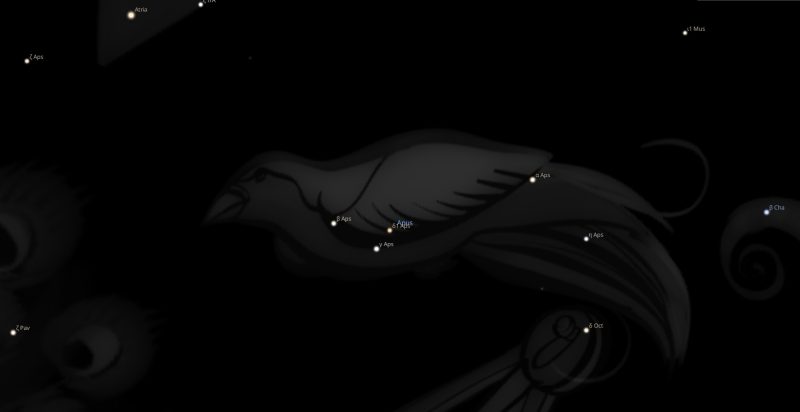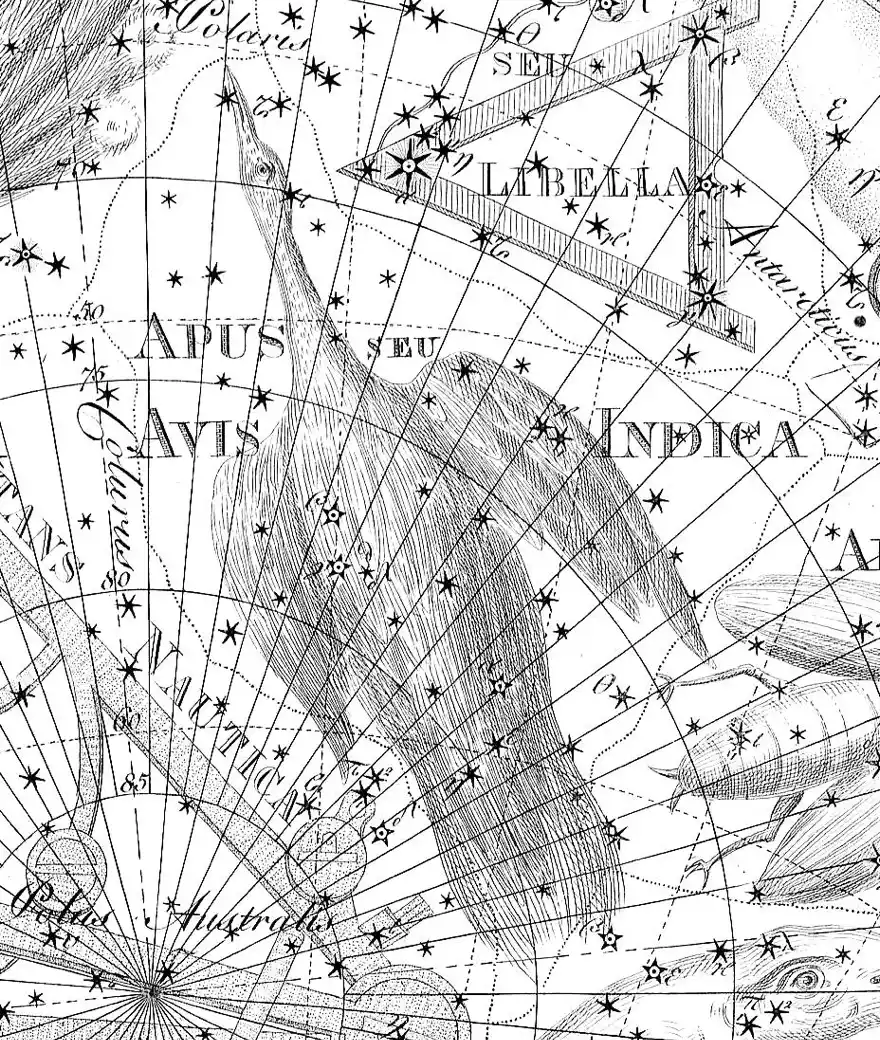FIXED STARS: Major Stars | 1000+ Stars | Constellations | About
Constellation Apus, the Bird of Paradise, is a southern constellation bordered by Octans, Chamaeleon, Triangulum Australe and Pavo. It was introduced by Johann Bayer in 1603, and it remains one of the 88 modern constellations. Apus spans 25 degrees of the zodiac in the Sign of Sagittarius.Apus Constellation Stars
| 2000 | 2050 | Star | Name | Sp. Class | Mag. | Orb |
|---|---|---|---|---|---|---|
| 14♐24 | 15♐07 | α Aps | K5 | 3.83 | 1°30′ | |
| 21♐30 | 22♐12 | δ1 Aps | K0 | 4.68 | 1°00′ | |
| 22♐41 | 23♐24 | γ Aps | M4 | 3.86 | 1°30′ | |
| 22♐56 | 23♐38 | β Aps | K1 | 4.23 | 1°20′ | |
| 24♐58 | 25♐40 | ζ Aps | A2 | 4.76 | 1°00′ |
Apus Astrology
Robson
History. This constellation was added by Bayer, 1604 A.D., under the name Apis Indica.
Influence. It is said to confer a kind, benevolent, sympathetic and ambitious nature. This part of the sky has apparently always been associated with birds, for it was known to the Chinese under the names “The Curious Sparrow” and “The Little Wonder Bird.” The connection of Gemini-Sagittarius with flight may possibly be due to this constellation. [1]
Allen
Apus, the Bird of Paradise, lies immediately below the Southern Triangle, about 13° from the South pole.
Its avian original is found only in the Papuan Islands, and the title is from Ἄπους, Without Feet, for the ancient Greek swallow, but well applied to this bird that has been thus fabled, as witness Keats’ “legless birds of paradise,” in his Eve of Saint Mark.
Bayer strangely had it Apis Indica on his planisphere of the new southern figures, where the typical bird is shown, as also in the corresponding page of text; but the universal consent as to the name Apus, or Avis, and its appearance as Apus Indica and Indianischer Vogel in the abridged German edition of Bayer’s work issued in 1720, with the fact that he had another, and correct, Apis, would indicate a typographical and engraver’s error in the original; but I have not seen this alluded to till now. The drawing always has been of the typical bird of our title, which Caesius adopted in his Paradisaeus Ales; but it sometimes is Avis Indica, the Indian Bird.
Apus similarly appears in China as E Cho, the Curious Sparrow; and as the Little Wonder Bird. Gould details sixty-seven naked-eye stars in Apus, its lucida, γ, being 3.9. [2]
References
- Fixed Stars and Constellations in Astrology, Vivian E. Robson, 1923, p.28.
- Star Names: Their Lore and Meaning, Richard H. Allen, 1889, p.43-45.

